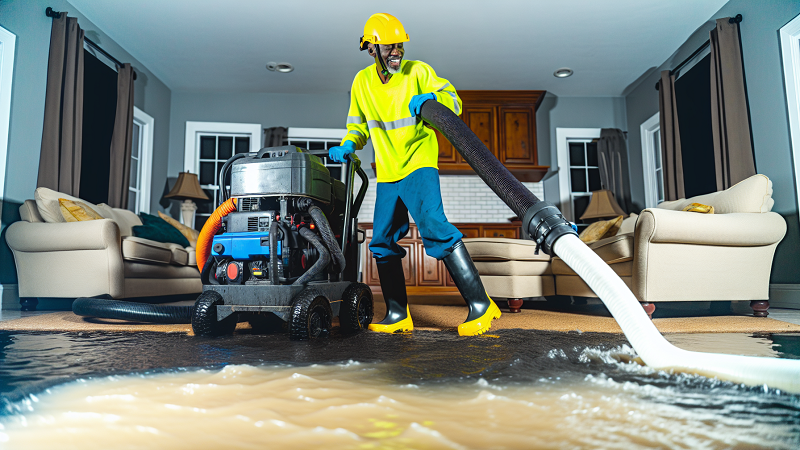Water damage is a common issue in Texas, where natural disasters like floods and storms can wreak havoc on homes and businesses. Understanding the process of water damage restoration is crucial to minimize long-term damage and protect your property. This guide provides a detailed look at the necessary steps and best practices to follow when dealing with water damage in Texas.
Understanding Water Damage Categories
Water damage is classified into three categories, each requiring a different approach to restoration:
- Category 1: Clean Water
This involves water from clean sources like broken pipes or rainwater. While it poses minimal health risks if addressed quickly, it can still cause significant damage if left unattended. - Category 2: Gray Water
Gray water comes from appliances like washing machines and dishwashers. It contains contaminants that can pose health risks if not handled properly. - Category 3: Black Water
The most dangerous category, black water, includes sewage backups and floodwaters. It contains harmful bacteria and pathogens, making professional cleanup essential.
Immediate Steps to Take After Water Damage
When water damage occurs, quick action is critical:
- Ensure Safety First
Turn off the water source and electricity to prevent further damage and ensure safety. Evacuate the premises if necessary. - Contact a Professional Restoration Service
Time is of the essence. Reach out to a reputable Texas-based water damage restoration company to begin the cleanup process as soon as possible. - Documenting the Damage
Take photos and videos of the damage for insurance purposes. This documentation will be crucial when filing a claim.
The Water Damage Restoration Process
Restoration involves several key steps:
- Assessment and Inspection
Professionals will assess the extent of the damage and identify the water source. This helps in creating a tailored restoration plan. - Water Extraction
Using specialized equipment, technicians will remove standing water from the property. Thorough extraction is crucial to prevent further damage and mold growth. - Drying and Dehumidification
Industrial-grade fans and dehumidifiers are used to dry out the affected areas. Moisture levels are continuously monitored to ensure complete drying. - Cleaning and Sanitization
All affected areas are cleaned and sanitized to remove contaminants. Odor removal techniques are also employed to restore air quality. - Restoration and Repair
The final step involves repairing or replacing damaged materials. This can range from minor repairs to significant reconstruction, depending on the extent of the damage.
Best Practices for Water Damage Prevention
Preventive measures can significantly reduce the risk of water damage:
- Regular Maintenance
Regularly inspect your plumbing, roof, and drainage systems. Address any issues immediately to prevent potential water damage. - Installing Water Detection Devices
Consider installing water detection devices that can alert you to leaks before they become significant problems. - Emergency Preparedness
Develop an emergency plan that includes contact information for local restoration services and insurance providers. Keep essential supplies on hand in case of a disaster.
Dealing with Insurance After Water Damage
Navigating the insurance process can be challenging, but understanding the basics can help:
- Filing a Claim
Notify your insurance company as soon as possible. Provide them with the documentation of the damage and work with the adjuster to assess the damage. - Understanding Coverage
Review your insurance policy to understand what is covered. In Texas, common exclusions include damage from flooding, which may require separate flood insurance. - Working with Restoration Companies
Choose a restoration company that is familiar with working alongside insurance companies. This ensures that all work meets the standards required for your claim to be approved.
Choosing the Right Water Damage Restoration Service in Texas
Selecting the right restoration company is critical:
- Key Factors to Consider
Look for a company with proper licensing, certifications, and experience in handling water damage in Texas. A local company with a solid reputation is often the best choice. - Questions to Ask
Inquire about the company’s response time, availability, warranties, and guarantees. Ensure they offer 24/7 emergency services, which is essential in water damage situations.
Conclusion
Water damage restoration is a complex process that requires immediate attention and professional expertise. By following the steps and best practices outlined in this guide, Texas homeowners can effectively manage water damage and protect their properties from further harm. Stay vigilant, maintain your property, and always be prepared for the unexpected to minimize the risks associated with water damage.
